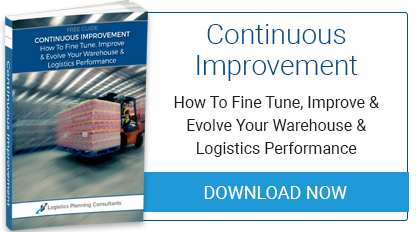
Supply chain professionals have been faced with mounting challenges this year. As we advance toward the holiday season, these challenges are starting to permeate some sectors and have a knock-on effect on the wider industry. But what's causing the dominoes to topple and how can businesses break the cycle of supply chain disruptions – either this year or in the future?
Supply Chain Trouble In Times Of Uncertainty
For years, supply chain professionals have been worried about climate change, but have kept this ever-growing threat at the back of their minds. After all, it's usually just Tier 3 and 4 suppliers that feel Mother Nature's wrath. But things are quickly taking a turn for the worse due to the coronavirus pandemic, a global disaster that shares its root cause with climate change.
During the pandemic, millions of people across the UK were furloughed, made redundant, or driven from their profession, causing a massive shift away from low-paid jobs. To make matters worse, Brexit has driven away 1.3 million EU workers between Q3 2019 and Q3 2020, according to Bloomberg. As the BBC reports, this exacerbated a national short term shortage of 100,000 HGV drivers and 500,000 manufacturing workers.
The driver shortage is causing haulage issues. There aren't enough lorries to load and carry cargo, and ports are unable to clear the backlog of container ships. The government's solution to tackle the pressures of the haulage industry is to simplify the HGV licencing regime and ask retirees to return to work. But even so, it's unlikely haulage will revert to pre-pandemic levels.
Driver shortages are also affecting the supply and price of petrol. This is causing inflation to go up, along with input costs and overheads for businesses. It also makes historically underpaid jobs even less attractive to employees. Meanwhile, issues like vaccine hesitancy and the threat of vaccine resistance keep gaining momentum. All these factors are causing a vicious circle of supply chain disruptions that could last for years.
How Not To Deal With Supply Chain Disruptions
Extending lead times is a knee-jerk response to the supply chain crisis. All it does is kick the can down the road because it makes lower tier suppliers extend their lead times too. Another reaction is to charter container ships. This might solve the company's short-term supply issues, but it only aggravates capacity constraints for the maritime, rail, and road network.
It's becoming clear that supply chain managers must shift some of their attention from a 'cost-down' approach to a continuity approach. Senior executives must adjust their performance expectations and adapt their strategy to manage risk by planning for uncertainty and doing their utmost to avoid delays. And instead of falling into the trap of Lead-Time Syndrome, the industry must look for sustainable ways to reduce demand or increase supplier capacity. Simply put, businesses must think further ahead.
How To Plan For Uncertainty
Supply chain disruptions are very complex, and it would be pointless to approach them from one angle only. Instead, you may want to consider a three-pronged strategic approach that addresses performance, procurement, and risk at the same time.
Risk Analysis
To understand your company's specific challenges, you could start by mapping out the Supply Chain Network, and outlining supplier (contractors, 3PLs) details, nodes, links, and transport modes. Reveal any macroeconomic uncertainties (labour shortage, fuel supply, transport issues) and the points on the map where they might have a negative impact. Convert these uncertainties into structured risks. Identify probability, consequences, trade-offs, and other options.
Then draft your Supply Market Intelligence reports to help inform your Service Continuity and Disaster Recovery plans. Once you've considered the actions you might take in the most likely scenarios, compare input and outcome. You might prefer to shorten your supply chain with on-shoring rather than near-shoring. You might try to diversify your supply base by going lower down the chain. You might try to manufacture more in-house, outsource to more efficient providers, or consolidate orders with a business partner.
Performance
It always pays to improve your KPIs. But from now on, the focus should be on variability and reliability. And requirements should be forecast for each individual supply chain link. Available in Stock (AIS) and Available to Promise (ATP) reports will help maximize warehouse space and streamline orders. Likewise, Capable to Promise (CTP) and Capable to Deliver (CTD) systems reveal the actual transport availability. If something doesn't quite add up, it might be time to rethink location, form, and function for specific sections of your inventory.
Better KPIs start with simpler supply chains. There are various ways to simplify yours: SKU rationalisation, using fewer product platforms, changing bills of materials, giving up on long-tail products, etc. It's also a good time to implement Sales and Operations Planning (S&OP), because it offers insights into the factors that influence supply and demand, and how to balance them. Looking at lead times, order and deliveries is a good way to identify patterns and trends not just in order cycles, but also in PoS, sales markets, and distribution.
Procurement
It's worth looking at payment terms for suppliers and transporters, and how they can improve. Collaborate with Tier 1 suppliers for insight into capacity constraints, sharing S&OP data as needed, and working together to find mutually beneficial solutions. Ask for more transparency from Tier 1 and Tier 2 suppliers, so that you have more time to prepare for supply chain disruptions. Finally, draft alternate supply contracts as a contingency and maintain positive business relations to ensure smooth transitions.
More Information
To find out more about planning with continuity in mind, please download our Continuous Improvement Guide. It's brimming with original pointers and ideas from LPC on ways to prepare for supply chain disruptions, uncertainty, and some of its cascading effects on businesses in the logistics sector.
Image source: Unsplash



